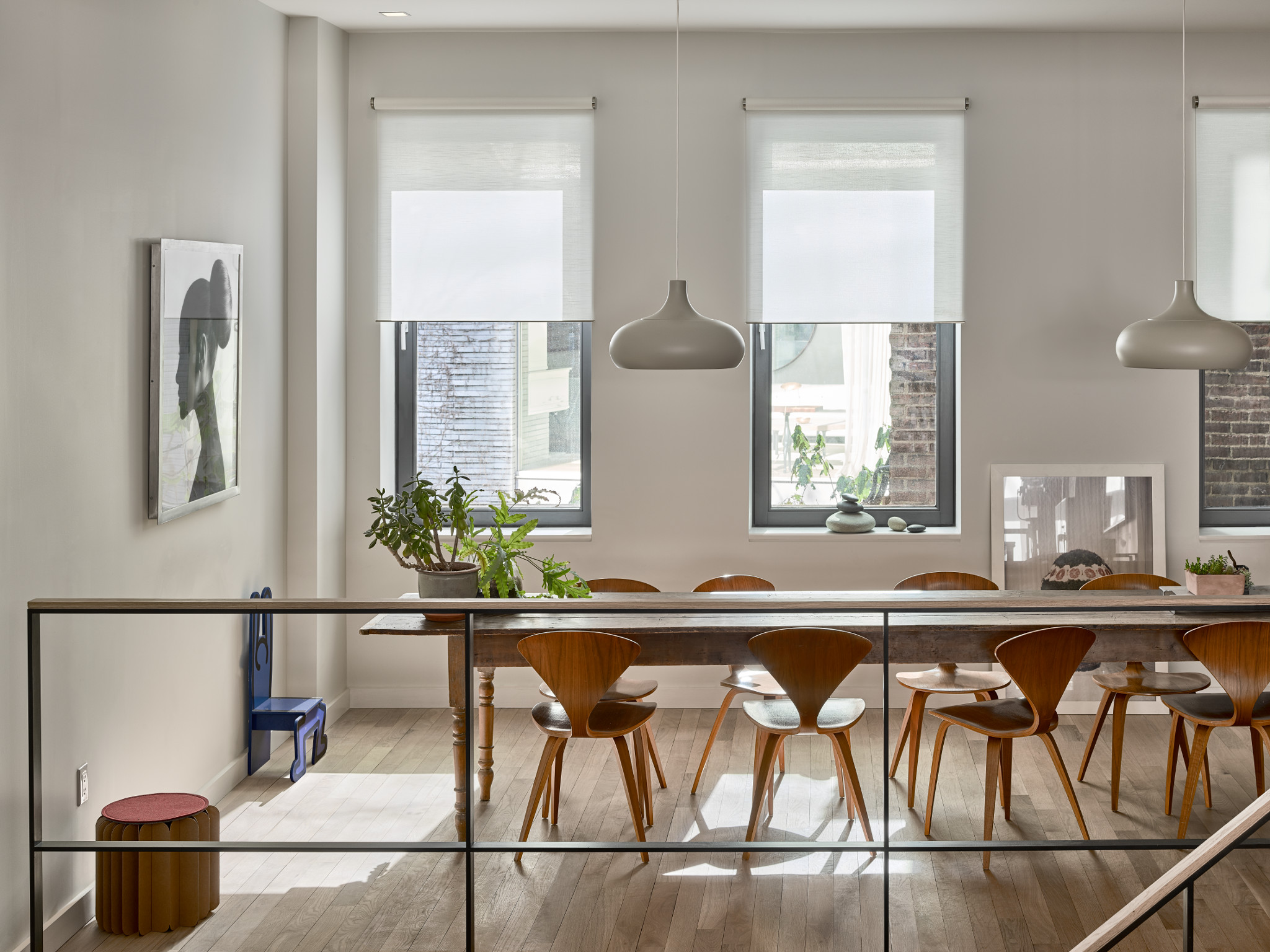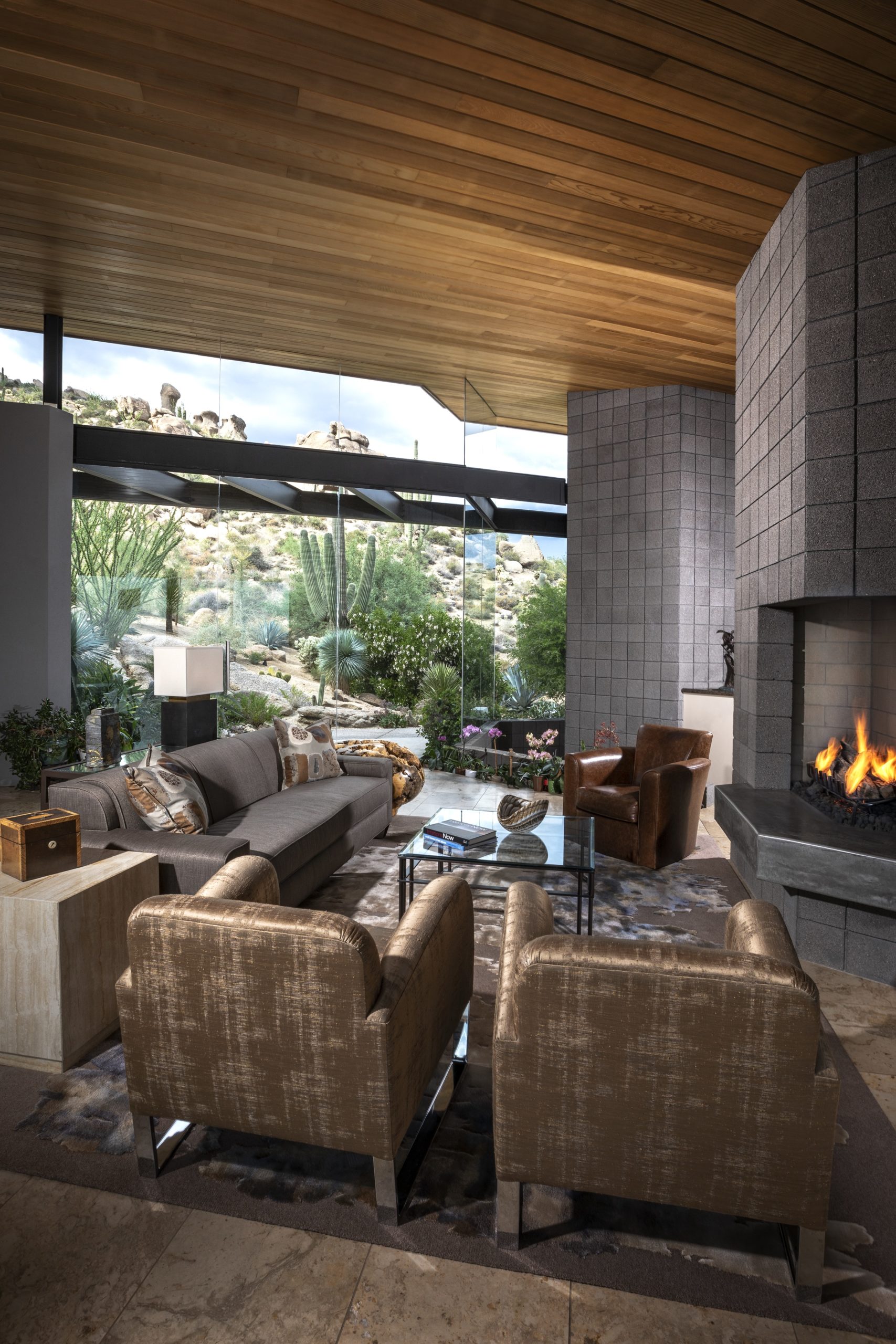“Green living is about our lifeline to nature and all that we are. We must address the whole person in every environment we are in,” says Barbara Kaplan IFDA, Allied ASID, who practices “Interior Design Through Holistic Living. “As designers, we create environments for people to thrive in and reduce the negative impact on the environment. These spaces need to be healthy, comfortable, flexible in use and designed for happy lives.”
Susan Solliday, Realtor®, past president of the Arizona North Chapter of ASID, and associate with Duneier Designs says, “Even before COVID, designers and their clients had an increased awareness of the impact our personal environments can have on our health. Manufacturers have responded to this new-found concern through products that focus on cleaner indoor air, surfaces that work to keep us safer and repurposing products into second lives.”
One of the area’s pioneers in sustainable design, Tanya Shively, ASID, adds, “It’s a relatively recent metaphor, but the message is as old as Genesis: We are the keepers of the bounty we have been given, the stewards of our planet. We can either ravage our resources or we can be thoughtful and respectful of the right of future generations to enjoy what we enjoy.”
Anita Lang, ASID, opened IMI Design in 1992 and says that sustainability is “near and dear to our family’s heart.” She admits occasional discouragement with the lack of implementation of environmental remedies but remains committed to green design, in particular, incorporating legacy elements into her clients’ interior designs. “We live in a disposable culture, and I spend time teaching my clients about the benefits of designing for the long term and using timeless pieces that you can take with you or sell –– and keep out of the landfill.”

Three More Cheers for the Three R’s
“Reduce, re-use, recycle” is a continuing mantra.
Instead of just buying new pieces for a redo, move them to other places. “Take everything out of each room and then bring the same pieces back and place them in different locations to create a new look and living experience,” says Kaplan, who is Lifestyle Editor for Trends Magazine
in Scottsdale.
Reclaimed wood or wood-looking products have gained popularity. “Reusing barn wood, whiskey barrels, pallets and crates not only adds character, uniqueness and warmth to modern interiors, but helps slow deforestation and improves air quality by reducing raw wood milling,” Solliday says.
Recycled metals and glass are becoming popular as components in flooring, countertops and furniture, she adds. For example, recycled glass countertops are an environmentally sensitive replacement for quarried stone. “Composed of a mix of quartz, porcelain and recycled bottles or windows, these hybrid products result in a very dense, durable and beautiful surface in an array of colors and styles, and they won’t harbor harmful bacteria and give off zero emissions,” she explains.
In addition, milk jugs, plastic bottles, and plastic grocery bags are being recycled into building and home products such as plastic lumber for decking and fencing. “Although precautions must be taken in the recycling process, the resulting products are quite amazing,” says Solliday. “Not only does the ‘lumber’ look great, but it’s not subject to termite infestation, rot or require ongoing maintenance, which alone can damage our ecosystem.”
Recycled plastic is also being made into broadloom carpet, area rugs, or extruded or injected into molded furniture. She offers as an example Calhoun, Georgia-based Mohawk Flooring, which specializes in a carpeting product made from as much as 100-percent post-consumer recycled plastic.
As part of her mission to be responsible to the planet and create “WELL Designed” homes that are eco-conscious, healthy and very livable, Shively has founded The Furniture Angel, a nonprofit that helps to keep high-end furniture out of landfills by offering a path to donation and a tax deduction for the responsible homeowner.
Repurpose or acquire heritage pieces, Lang suggests. She’s recently acquired a set of 1970s lamps made by renowned Charles of Paris for a Paradise Valley client, a classic sectional for herself and reclaimed oak furniture for another client.
“Buy the best pedigree you can, the best artisanship. Pick pieces and designs that are classic, not just repeats of pictures from the internet or following what the color of the year is,” she says.

New Products & Technology
Lang has recently used recycled carpeting from Shaw Industries Group at Talisker, a ski-in, ski-out resort in Deer Valley, Utah. “It has lifecycle thinking behind it, from the materials used to how to dispose of it,” she explains.
For her projects, Solliday has been incorporating bamboo, which has become increasingly popular in flooring, cutting boards and countertops. “Bamboo is one of our fastest-growing plants, harvestable within four years of planting and is non-toxic, recyclable and has a low carbon footprint,” she says.
Cork floors now feel and look like hardwood. “Patterns are being printed on cork or manufactured as a hybrid product with a super-tough vinyl sitting on top of a cork floating floor plank,” she says.
Low VOC paints are widely available, and Solliday specifies lower off-gassing paints. “Sherwin Williams, in fact, has recently developed a paint product that has sanitizing technology to help prevent the spread of harmful bacteria on painted surfaces.”
Shively has been using Mostro by Zak + Fox, a new sustainable alternative to shearling or fur. Available in five colors, it is a woven, long pile plush velvet completely manufactured from wool fibers, and no animals are harmed in making it. She says, “It’s much softer than even a fake fur made from polyester or similar fibers and would make great pillows or a throw on a bed.”
She has also been bullish on circadian rhythm lighting. “It’s designed to allow bodies to fall asleep faster and sleep better because we are given time to adjust from the bright lighting that signals our brains to be alert and wakeful,” she explains. “It’s similar to using the dim feature on your phone that reduces blue light and warms the screen display slightly at night but in a whole room or even whole house way.”
In addition, Ketra’s Natural Light Solution is a recent LED lighting and control system that allows lighting programs to replicate the change of interior light to closely mimic natural daylight and how it shifts from warm to bright and back to warm during the day.
Some clients have also asked Shivley to reduce EMF waves in their homes, especially their bedrooms at night. She notes that they can turn off Wi-Fi at night, and they can further minimize sources from outside by painting exterior walls with reflective paint (under the visible exterior color paint) to stop incoming frequencies from cell towers and other sources.
“They can even shield wiring in the home with conduit similar to a commercial building to reduce the dirty energy created by the basic electrical wiring in the house,” she says. “The energy created by EMFs can affect sleep, cause headaches and other issues for people who are sensitive to them. And many more people may be affected without even realizing why they are experiencing these symptoms.”
Good Practices for Good Spaces & Living
Kaplan notes that we need to be mindful of advances in technology, but, “We also need to shut technology away to give us human experiences and interaction with people and nature.”
“People must participate in the creation of their own environments for their health, well-being and lifestyle,” she adds. “This requires taking time for oneself to be mindful and introspective as to one’s needs and wants and one’s style of living and taste in home fashion.”
She combines various approaches in her work, including psychology, Feng Shui, and the Bajaro Method, which focuses on awareness of changes in each person and in their surroundings. “This awareness encompasses understanding and accepting ourselves and the world and people around us,” she says.
Kaplan also likes biophilia, such as using plants inside to mirror those outside. “Just like nature, which is ever-changing, we as humans are ever-changing and have requirements for health and well-being that grow and evolve as we do. We are living and breathing green design always and all ways.”
Solliday and her team strive to integrate sustainable design into all interiors. “We are always seeking ways to help reduce the negative impacts on both the environment and the health of occupants, whether from sourcing locally to save on fuel costs, utilizing digital technology versus print to reduce waste or choosing sustainable materials,” she says.
For Lang, by planning for longevity, and avoiding thinking in short cycles, designers and their clients can create unique personally felt interiors. “They sit outside the trends and are truly creative because they come from inside you and represent yourself,” she says. “In this way, you’re not following design. You’re driving it.”
Brown is an Arizona-based freelancer (azwriter.com).
Keep up with all of Green Living’s original content online
and on social media.





